- Home
- Mark Frost
Twin Peaks: The Final Dossier Page 8
Twin Peaks: The Final Dossier Read online
Page 8
Both Briggs and the Double then vanished from sight for the next twenty-five years. Here’s where the story gets dicey, and by that I mean “the laws of time and space as we understand them may not necessarily apply.” (As you know, the following is based primarily on testimony gathered from our main eyewitness in Buckhorn, South Dakota, the now deceased high school principal, William Hastings, whom I questioned personally.)
For the past few years, Hastings and his girlfriend—local librarian Ruth Davenport—had been dabbling in speculative esoteric/occult research. Together they authored an amateur blog about their work, which they posted on the Internet. They titled it The Search for the Zone. According to Hastings’s testimony, at some point during their last year together, they claimed to have made contact with a person or entity that identified itself only as “The Major.” They were eventually told they could make personal contact with this individual by entering into some sort of nonphysical or metaphysical dimension. The Major told them that this encounter would occur at a specific time and place in or near an unspecified entrance to this “Zone.” The location he gave them for the meeting happened to be a derelict vacant lot on the wrong side of the tracks in Buckhorn.
Once they were “inside” the Zone, “the Major”—whom Hastings described as “hiding” or “hibernating” inside of wherever this was—appeared and tasked them with finding a set of “important coordinates” from a secure military database. (From Hastings’s description, it seems that during this initial conversation, “the Major” revealed himself to them in more or less corporeal physical form.) As we’ve now been able to confirm, once Hastings and Davenport succeeded in hacking this military database—most likely with clues provided by the Major—and obtained the information he was after, they returned to the same location of the “Zone” a second time to personally deliver it to “the Major.” As they were about to give the Major these coordinates, according to Bill Hastings, all manner of hell broke loose. The Major floated up—toward what he described as a vortex or “portal,” presumably like the one you yourself witnessed, Chief—and dark, shadowy figures, appearing out of nowhere, assaulted them. Both Davenport and “the Major” were decapitated in the attack, and Hastings was left unconscious, but alive, in the vacant lot. He seemed to suffer some form of memory loss about this event, and his memory returned only after his arrest.
A few days later, Davenport’s severed head, aligned perversely and tenderly on the neck of the body of “The Major,” was discovered by local police in her apartment. This eventually led to our involvement and our arrival in Buckhorn, including our interrogation of Hastings. It also led, weeks later, to our discovery of Briggs’s secret dossier—which one has to assume Briggs also gave to Hastings and Davenport at their first meeting, and which Davenport had concealed in a basement storage locker in her apartment building. This suggests, to my mind, that wherever he’d “been” for the past quarter of a century, the Major had taken the dossier with him.
The body was identified as that of Major Garland Briggs, and his age was determined to be roughly forty-five, which just happened to be how old he was at the time of his disappearance, twenty-five years ago. Shortly after Buckhorn police took Hastings into custody, his wife, Phyllis, was shot to death—allegedly by her attorney/lover, who shortly thereafter also died when his car exploded. This entire local crime wave, the preponderance of evidence now confirms, was committed by the Double and his henchmen.
To recap: Hastings attempted to show us the site of this entrance to the Zone, where we discovered the body of Ruth Davenport in a vacant lot—and where you had your own glimpse of the Zone—during which time Hastings was mysteriously killed, assaulted by an unseen assailant more or less right in front of our eyes. The coordinates the two of them had given to the Major were found on the arm of Ruth Davenport, where she’d apparently written them down in order to verbally relay them to the Major; Hastings indicated that he’d cautioned them to put nothing on paper. Those coordinates eventually led us back to Twin Peaks, the truth about “Diane,” and the final collision at the sheriff’s station between Cooper and the Double.
Do we doubt that any of this actually happened? It’s hard to argue with when, for a large part of all that ensued, we were eyewitnesses.
So: Where exactly had Major Briggs been “hiding” or “hibernating” for twenty-five years? After faking his own death, did he make the ultimate escape? Did he slip inside some sort of “portal” near Twin Peaks—its location revealed by these aforementioned coordinates—where time proceeded to stand still for twenty-five years while he evaded the Double? Given our Bureau training—or dare I say bias?—to regard our human existence as a “science-based reality,” how is this idea something we can even consider as remotely possible? And yet we have before us a substantial amount of what one is compelled to concede is supporting evidence—exhibit A, the forty-five-year-old body of Major Briggs—which appears impossible to refute. For the purposes of my report, let’s accept that as a “known unknown.” But we can take it further: the idea of these “coordinates” revealing—okay, I’ll say it—the existence of multiple locations of entrances into what I’ll label (for our internal discussion only) “other space-time dimensions” is the next conundrum confronting us. Certainly, “the Major” making entrances in Twin Peaks and an exit in Buckhorn to meet with Hastings and Davenport suggests that at least one other such “portal” exists. Once again, you have your own eyewitness experience in Buckhorn to draw on here, Chief: In your own words, that portal seemed to lead somewhere.
It also implies this: Since it’s clear that Hastings and Davenport “hacked” this information on the Major’s behalf from what they told us was one of our governmental agencies, it suggests that we already had this information in our possession. And Briggs knew it was there. Does this imply the same thing to you that it does to me? That—I’m speculating—Major Briggs knew about all this because, near the end of his own life, Doug Milford gave it to him. That Milford or Briggs—or both of them—figured out that Listening Post Alpha had gathered such beyond-classified information, which, I’ve come to understand, is more or less our stated mission. More than possible. But is it also possible that the Major didn’t initially realize all that they had? Did something in the conversation Briggs conducted with the Double at his house that day tip the Major off to this information’s existence, or, at the least, to a relevance he hadn’t previously realized it held?
My question to you is: Was it us? Did the Blue Rose Task Force possess this information? Was it actually our servers that Hastings and Davenport hacked into? A high school principal and a librarian? For crying out loud, who were these people, Russian sleeper agents? (That was a joke, Chief, but the idea that these amateurs penetrated our servers is not.) Not willing to give them that much credit, I’ll offer another scenario: Briggs knew about the Blue Rose Task Force, so is it possible that—near the end, when he realized the Double was coming for him—he stashed the information inside some innocuous digital cutout where he knew no one else would look for it? We’ve since learned from Twin Peaks law enforcement that the Major hid a similar clue, to the local set of coordinates, for his son, Bobby, in plain sight—concealed in his favorite armchair. I believe this argues for the second option as the more likely: Briggs stashed the information in a place that would not have posed insurmountable entry barriers to amateurs like these two Buckhorn rubes, in a place where no professional would even think to look for it. Misdirection. (I’m rooting for this interpretation, by the way, for obvious reasons.)
Now let’s ask ourselves what the Double was up to in all of this, from his opening move.
We know that Agent Cooper “disappeared” somewhere in the Ghostwood Forest that night more than twenty-five years ago, in pursuit of Windom Earle. We know that he reappeared the next morning, along with Annie Blackburn, and was found by Sheriff Truman. We can also say, with a high degree of certainty, that this particular “he” was the Double; this was its first
confirmed appearance. Which means that the real Cooper was—most likely—still “inside” wherever he’d disappeared into the night before. There are indications in many of the accounts I’ve examined—on and between the lines—that Cooper had found his way into some kind of out-of-time place or portal similar to the Zone described by Major Briggs. (For instance: The ancient pictographs on the walls of Owl Cave are alleged to depict how access to such a place is attained.) Deputy Hawk is on the record citing a local Native American legend to describe this particular place. His people called it the Black Lodge. I’m going to suggest, for the sake of convenience, that we call it this, too. (Or if that term doesn’t work for you, I suggest we refer to it as something like “the Hotel California,” in that “you can check in, but you can never leave,” at least not for twenty-five years.)
Once the Double disappeared from Twin Peaks after his meeting with Briggs, he utterly vanished. Every maximum-alert all-points bulletin issued around the world by the Bureau failed to turn up any trace of him for the next quarter century, save two. There was a surveillance photo of the Double from a South American sting operation, which certainly appears to be him, though analysis did reveal hints of digital manipulation, so in the Photoshop era, it may be impossible to authenticate. The second: Cooper appears, more clearly, on another surveillance photo from the bizarre “glass box” operation/murder scene that you and Albert investigated more recently in Manhattan. Connecting these distant dots yielded the following conclusion, which, thanks to a boatload of forensic digging and dedicated effort across a multitude of disciplines during the past year, I have now been able to substantiate:
Based on these findings, during his twenty-five years on the loose, the Double appears to have established and run an international criminal syndicate to rival any cartel or crime family in recent memory. This organization appears to have inserted its tendrils into nearly every known vehicle for vice in the lexicon: gambling, drugs, cybercrime, human trafficking, prostitution, murder for hire, illegal banking, stock manipulation, extortion, blackmail, insurance fraud. (About the only criminal arena missing from the list is politics—aside from a few obvious bribes made to elected foreign officials—but chances are that’ll turn up eventually.)
All the proceeds from this baroque, elaborate spiderweb—minus expenses and payoffs, of course—funneled directly to the top, to him, through a dense and complicated network of shell companies, LLCs, offshore banking, and the complicit, well-compensated participation of a number of known corrupt regimes and broken states. The entirety of the operation will take many years to unravel, but our early and likely overly conservative estimates suggest that the net payoff to the man at the top was in the billions.
Although the Double appeared to somehow travel freely throughout the world—establishing residences and businesses in a dozen different places, among them Las Vegas, Berlin, Amsterdam, Buenos Aires, the island of Cyprus, and Istanbul—he doesn’t appear to have amassed all of these resources for the usual, more or less banal criminal outlets or indulgences we’re accustomed to seeing: greed, lust, materialism, self-interested power, etc. Instead he appears to have been employing this growing fortune for what I would suggest we call “research.” The Double was after something. Hunting something, and maybe more than just one thing. Here’s what we know:
He desperately wanted those coordinates from Briggs. He pursued him across a quarter century, even after an official public finding that the Major had died in that car crash, and he never relented. If Briggs ever came out of hiding—from whatever manner of “space” he was hiding in—prior to appearing in Buckhorn, we have no record of it. But it’s clear that the second time the Major emerged to meet Hastings and Davenport, the Double was there waiting for him. He killed Briggs, Davenport, Hastings, and anyone else who got in the way, seized those coordinates, and headed for their location, more or less directly, by way of the South Dakota prison and our former confidential FBI/Blue Rose informant, Ray Monroe.
(Absent any information from Monroe—also subsequently murdered by the Double—it seems clear that the Double went to all the trouble of breaking into prison and breaking out with Monroe because the latter had some kind of information the Double wanted. I’ll circle back to this shortly.)
The “glass box” operation in New York, which we now know the Double set up through a series of cutouts, suggests he was after something else as well. Some kind of entity that moved, as Briggs appeared to be able to do, free of the constraints of time and space as we used to think we understood them. Something monstrous and murderous that appeared in that box and slaughtered those two kids who had the horrible misfortune of being there when it appeared. From the evidence we’ve seen, the only familiar word that comes to mind to properly describe this entity is “demonic.” And the glass box appears to have been installed there as a trap to catch it.
Let’s examine its motives in the first instance: The Double seems to have wanted these coordinates to gain entrance to whatever space they led to, to find the “place” where Briggs had been hiding, a location or dimension where time appeared to stand still. (This sounds crazy even as I’m writing it, but we’ve both seen things during the course of this investigation, Chief, that are even “crazier” than this, so I’ll just run with it.) Was this “portal” the only one of its kind? Or was it just one of many entrances, like a subway stop into some sort of mysterious network or web that could be accessed from many different places? That seems likely. My thought is this: What if the Double was looking for the most important location in this alleged system, a Grand Central Station, if you will, on the other side?
Final question, and it’s one that all the others lead to: What did the Double want, if it ever actually made it to this place? What was it after? Some kind or form of even greater power than it already appeared to possess? (What would that be? Immortality?) I mean, I don’t think it was trying to get there just to lodge a complaint or plead a case with whoever was in charge, do you?
I want to take a step back for a moment: Let’s consider the very existence of the Double. You’ll recall the mythological location I mentioned earlier—the Black Lodge, a hellish place of origin for people, entities, or creatures walking the “dark path,” posthumously referenced by Margaret Coulson in her funeral remarks. Deputy Chief Hawk also once spoke of another spiritual concept that may be related, called the Dweller on the Threshold. (Agent Cooper mentioned hearing about it from Hawk in one of his tapes to Diane.) This “Dweller” is said to represent the sum total of all the dark, negative, unresolved qualities that reside in every human being. (There are also esoteric theories that the same idea can apply to the fate of nations, but let’s confine this to the more personal concept for now.)
The Dweller legend states that when a person on the spiritual path consciously approaches a place or state of soulful enlightenment, at the very moment they’re about to enter into its full embrace—on the “threshold,” as it were—this Dweller allegedly appears and must be confronted and defeated in order for the person to successfully pass through. As with most mythology, my presumption had been that this figure is allegorical, a metaphor for a struggle that takes place in the realm of the intrapersonal and psychological. Not a literal concept.
But now I have to ask: Is this, literally, what Cooper’s Double was? Albert and I have spoken of this thing before as a “tulpa.” A tulpa—like the false “Diane”—is a concept that in the original Tibetan, it turns out, does not mean “double” or “doppelganger” but rather an entity created or summoned by a dark magician or sorcerer, through the practice of ancient and corrupt forms of esoteric magic: necromancy, demons, devil worship. Madame Helena Petrovna Blavatsky, who wrote extensively about these matters in the nineteenth century—setting aside for a moment the many arguments about whether or not she was an outright charlatan—referred to this sect as “the Brothers of the Shadow.” I bring this up to make the point that the Dweller scenario, in the Double’s case, at least, seems more lik
ely to me than the tulpa.
If we continue along these lines, is there a third alternative theory worth considering—simpler, perhaps, but no less fantastic? This is directly related to another controversial concept you told me about from the original Laura Palmer case: While in custody, shortly before his death, Leland Palmer claimed to be possessed by a demonic entity called BOB, and he attributed his actions to its lifelong, malign influence over him. I’ve gone over all the evidence and contemporary accounts. They are bone-chilling, to the point where—had Leland survived—one wonders if an exorcism might have been more efficacious than a criminal trial.
Which leads me to pose this possibility: Was the Double somehow similarly possessed? I realize we can’t settle this debate with absolute certainty, or even a fraction of it, but I also think it’s worth asking whether all these concepts fit together—logic and method be damned—and point toward something that’s so far out of our perception that we’ll never begin to grasp it if we don’t tremendously enlarge our frame of reference.
We saw what happened at the sheriff’s station. There were close to twenty witnesses, including you, me, and Albert. We agree that we saw more or less the same thing: At the moment of its death, something appeared to rise up out of the Double and disappear: something not Cooper.
And we know that no sooner had Cooper appeared to “defeat” this … whatever it was … than he almost immediately appeared at the location of the coordinates that his damn double was after from the start—and you went with him, Chief—and from there Cooper promptly disappeared again and hasn’t been seen since. And Cooper’s former assistant, the real Diane—who had just appeared out of nowhere in a downstairs holding cell not long before all this happened—disappeared right along with him.
(Do I need to revisit the false—or tulpa—“Diane” that we all saw die in a Buckhorn motel room a few days earlier when she pulled a gun on the three of us? I mean, honestly, are they cranking out these duplicate creatures in an alternate-reality Kinko’s with some kind of Lovecraftian 3-D printer? Pardon my French for a second, Chief, but what the fuck?)

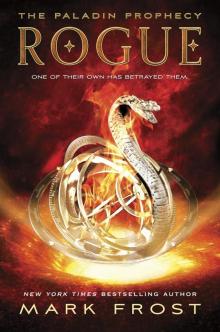 Rogue
Rogue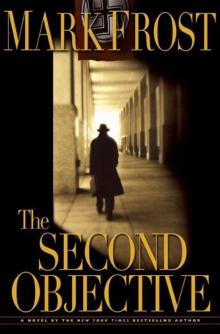 The Second Objective
The Second Objective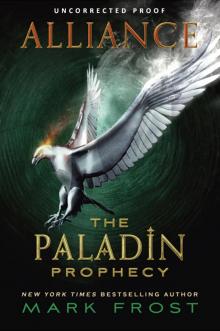 Alliance
Alliance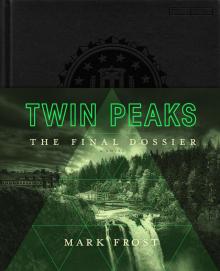 Twin Peaks: The Final Dossier
Twin Peaks: The Final Dossier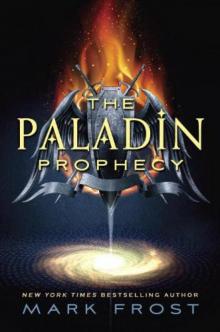 The Paladin Prophecy
The Paladin Prophecy Game Six: Cincinnati, Boston, and the 1975 World Series: The Triumph of America's Pastime
Game Six: Cincinnati, Boston, and the 1975 World Series: The Triumph of America's Pastime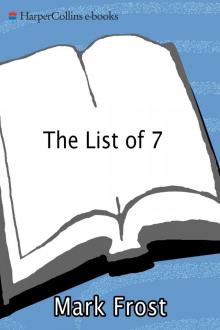 The List of Seven
The List of Seven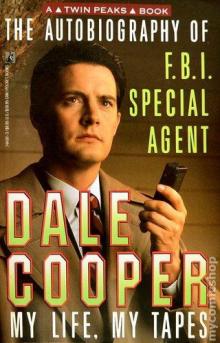 The Autobiography of FBI Special Agent Dale Cooper
The Autobiography of FBI Special Agent Dale Cooper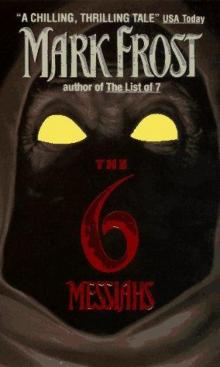 The Six Messiahs
The Six Messiahs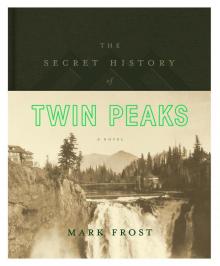 The Secret History of Twin Peaks
The Secret History of Twin Peaks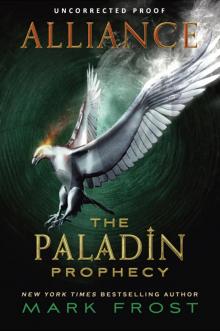 Paladin Prophecy 2: Alliance
Paladin Prophecy 2: Alliance Game Six
Game Six